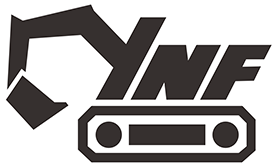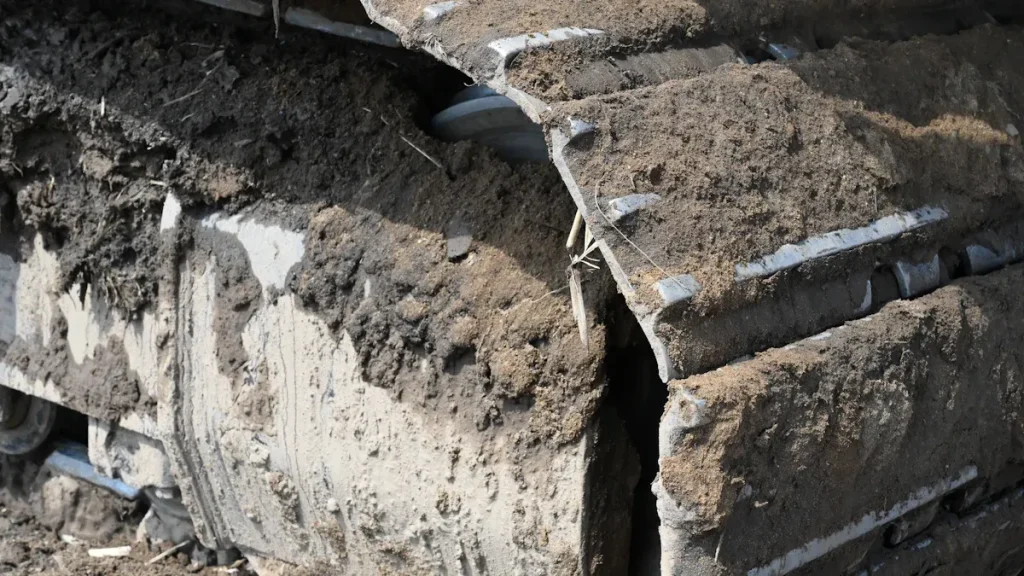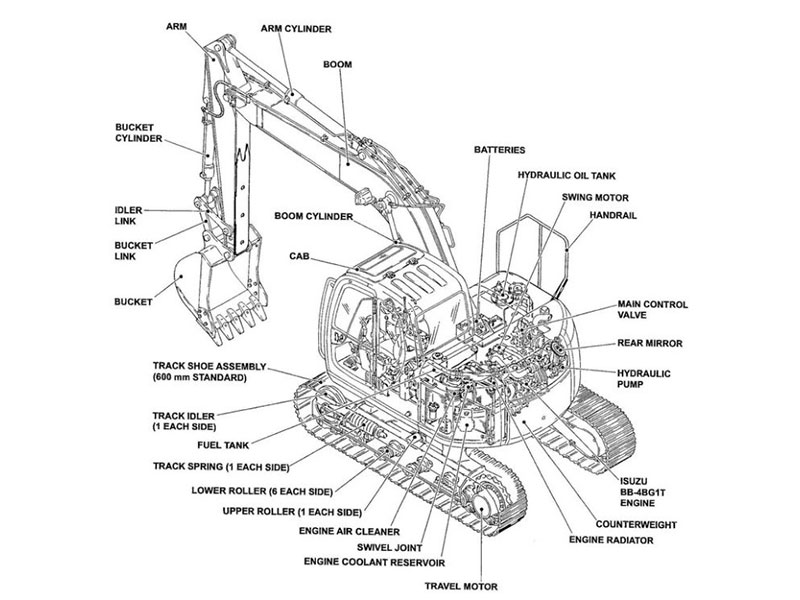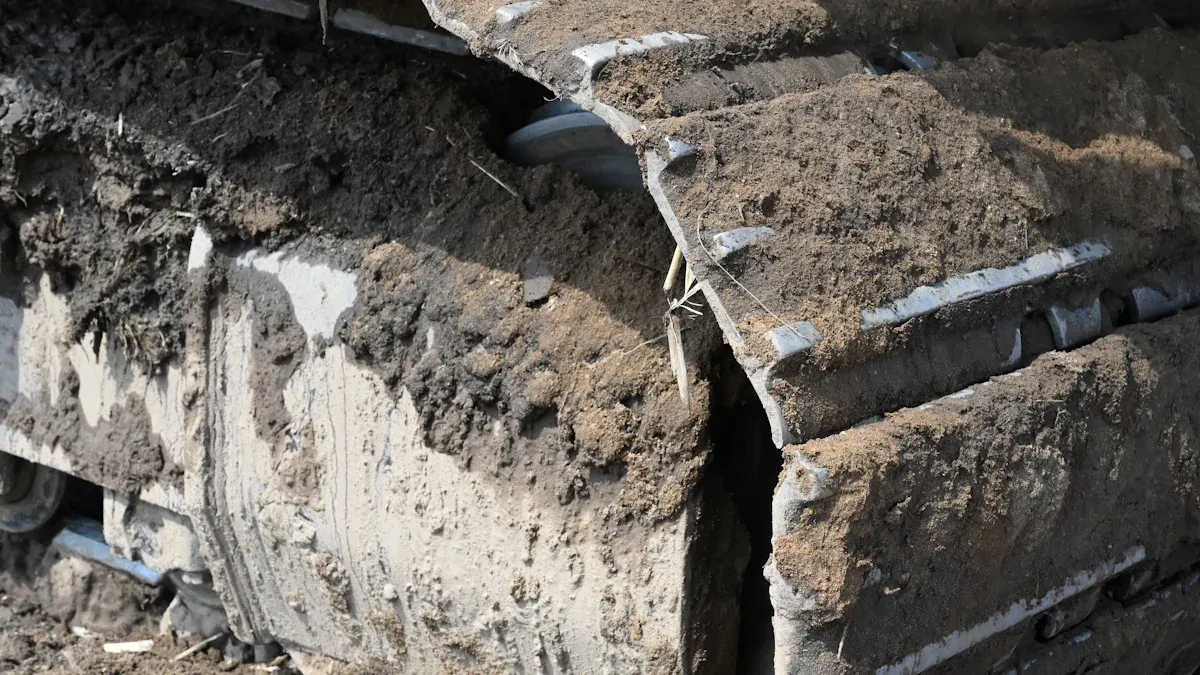
Choosing the right excavator parts undercarriagge is essential to protect your machine and ensure it runs smoothly for years. Start by identifying your machine’s type, weight, and daily workload. The job site is important as well—factors like soil type and ground conditions will influence your choice of excavator parts undercarriagge. Modern, durable steel and composite materials used in excavator parts undercarriagge last longer and reduce the need for frequent replacements.
Selecting strong, compatible excavator parts undercarriagge:
Increases value and minimizes machine downtime.
Saves you money in the long run, even if the initial investment is higher.
Keeps your machine ready for use with regular inspections and quick repairs.
Key Takeaways
You should know your excavator’s type and weight. Check the job site conditions too. This helps you pick undercarriage parts that fit well and last long.
Choose the right tracks for your machine. Use steel tracks for rough ground. Use rubber tracks for soft or delicate surfaces. Pick hybrid tracks for jobs with both types of ground. This keeps your machine and the work area safe.
Check and take care of important parts often. Look at track chains, rollers, idlers, and sprockets. This stops breakdowns and helps your undercarriage last longer.
Use OEM or trusted aftermarket parts that fit your machine’s needs. This keeps your machine safe and protects your warranty. It also helps you avoid expensive repairs.
Buy from suppliers with good reviews and clear prices. Make sure they offer good support. This helps you get quality parts fast and keeps your excavator working well.
Machine and Job Site
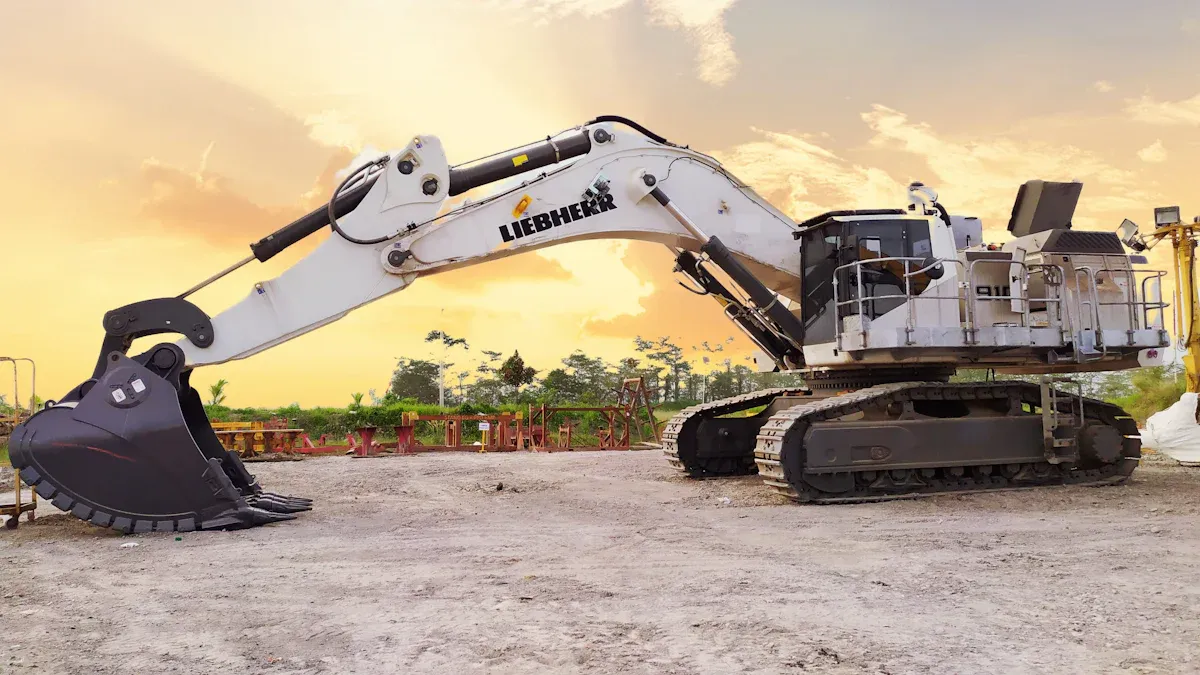
Identify Machine Type and Weight
First, you should know your excavator’s type and weight. Every machine needs different undercarriage parts. The right parts depend on these things. The table below lists common excavator types, what they do, and their weight classes:
Excavator Type | Description & Typical Use Cases | Weight Class / Size Range |
|---|---|---|
Standard (Crawler) | Tracks, turns all the way around; used for building, mining, landscaping, and farms | 7 to 45 metric tons |
Wheeled | Has wheels for city jobs and roadwork; easy to move on flat ground | Similar to standard |
Long-Reach | Has a long arm for tearing down or reaching far places | Varies |
Dragline | Very big, used for harbors, canals, and mining | Larger than standard |
Boom in back, bucket in front; good for digging and leveling | Varies | |
Hydraulic Shovels | Very strong, big buckets for mining and water digging | Over 45 metric tons |
Suction Excavators | Uses water and vacuum for careful or underground work | Mini to standard sizes |
Tip: Mini excavators (under 7 metric tons) are best for small spaces and yards. Standard excavators (7–45 metric tons) work for most building jobs. Large excavators (over 45 metric tons) are for big mining and engineering work.
Assess Job Site Conditions
The job site affects how fast undercarriage parts wear out. You need to look at these things before picking parts:
Underfoot conditions: Sharp rocks and sand wear out tracks and rollers fast. Wet dirt with hard sand wears them out the most.
Packing: Clay, silty dirt, or snow can get stuck between parts and cause more wear. Rocks that do not come out keep packing up.
Terrain: Slopes, hills, and bumpy ground move weight and wear out some parts faster. Going downhill wears out the lower side more.
Operation: Driving rough, going too fast, or digging wrong makes parts wear out quicker. Turning a lot or working on slopes without leveling also makes parts last less time.
Environmental factors: Water, chemicals, and changes in temperature can rust steel or make it break easier.
Training operators well and checking often helps stop extra wear and makes your undercarriage last longer.
Excavator Parts Undercarriage Components
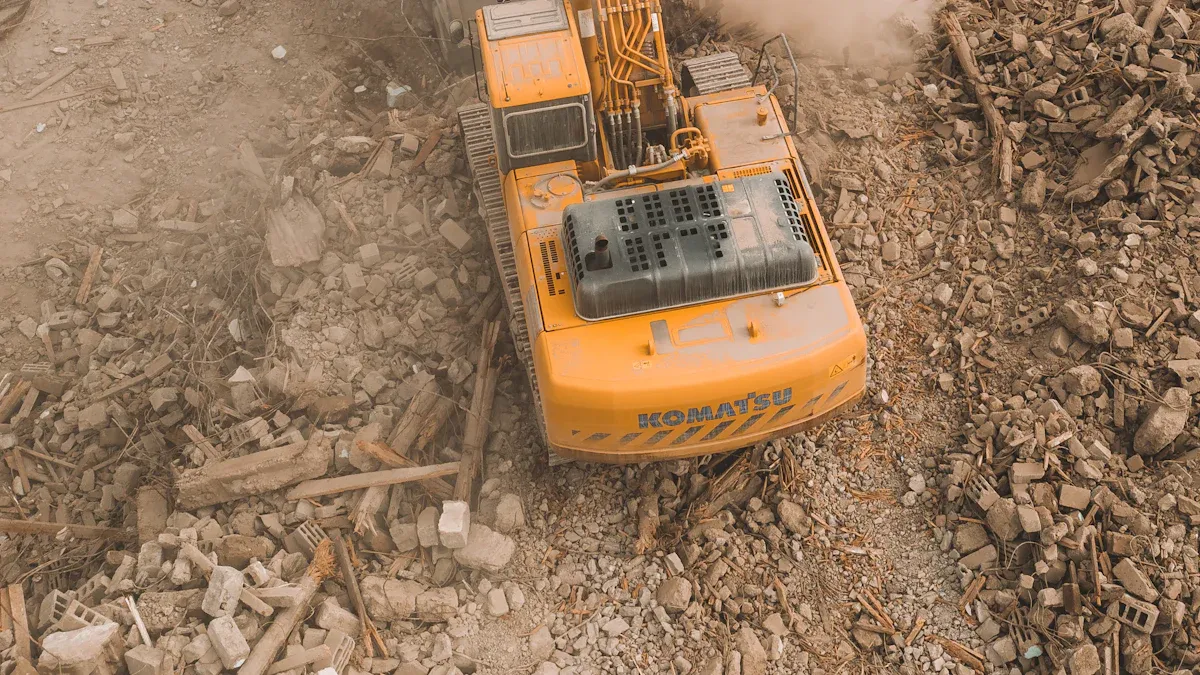
Tracks: Rubber vs. Steel
Picking the right tracks for your excavator parts undercarriagge is important. The tracks you choose change how well your machine works and how long it lasts. You need to pick tracks that fit your job site and machine size.
Steel tracks are very strong. They work well on rough ground, like dirt, snow, or during demolition. Steel tracks give good grip and help with backfilling. These tracks are best for big excavators over 10,000 lbs. But steel tracks can hurt grass or finished concrete.
Rubber tracks are lighter. They do not damage the ground as much. Use rubber tracks on grass, asphalt, or concrete. They are good for small excavators and jobs where you want to protect the surface. Rubber tracks wear out faster on rocks or rough ground.
Hybrid tracks use steel chains and pads made of steel and rubber. These tracks are tough and also protect the ground. Hybrid tracks cost more, but you can change the pads. They handle debris better than rubber tracks. Hybrids can still hurt grass because of gaps between pads.
Tip: Most small excavators come with rubber tracks. If you work in tough places, steel or hybrid tracks might save money by lasting longer.
Rubber tracks usually last one to two years. That is about 1,000 to 2,000 hours of use. If you clean them and keep them tight, they can last over 2,000 hours. Steel tracks last longer than rubber tracks if you take care of them.
Key Components Overview
Knowing the main parts of your excavator parts undercarriagge helps you spot problems early. Each part has a job to keep your machine steady and moving.
Component | Function |
|---|---|
Track Frame | Holds all undercarriage parts together. Attaches to the excavator. Spreads out the weight. |
Track Shoes | Metal or rubber plates that touch the ground. Give grip and hold up the machine. |
Track Chains | Link the track shoes in a loop. Let the tracks move around the frame. |
Rollers | Guide the track shoes and spread the weight. Track rollers carry the load; carrier rollers keep the track straight. |
Idlers | Big wheels at the front. Hold up the track chain and keep it tight. |
Sprockets | Wheels with teeth at the back. Grab the track chain and move the excavator. |
Final Drive | Sends engine power to the tracks. Uses motors and gears to make the tracks move. |
Track rollers hold up the machine’s weight. They keep the tracks straight and take hits from bumpy ground. Carrier rollers stop the tracks from sagging and help them move.
Idlers guide the tracks and keep them tight. They stop the tracks from getting loose.
Sprockets grab the track chain and move the machine. They work with the final drive to turn engine power into movement.
Checking these parts often helps you stop breakdowns. This keeps your excavator parts undercarriagge working well.
Maintenance Accessibility
It is easier to fix your machine if you can reach the undercarriage parts. Look for designs that let you check, clean, and change parts fast.
Doing daily checks and following a schedule stops problems before they start. This saves time and money.
If you can get to rollers, idlers, and track adjusters easily, you can fix things faster. This cuts down on surprise breakdowns by more than half.
Keeping good records and using tracking software helps you remember what needs fixing. This can lower repair costs by up to 25%.
Fewer breakdowns mean your excavator parts undercarriagge lasts longer. Your machine can keep working.
Note: Picking undercarriage parts that are easy to reach helps your machine run longer and saves you money.
Compatibility and Quality
OEM Specs and Fit
You must use undercarriage parts that match your machine’s OEM specs. This keeps your excavator safe and working well. OEM specs are not just about size. They also make sure each part fits and works with the rest of your machine. Using the right parts protects your machine and stops expensive repairs.
Good engineering makes parts fit your excavator just right.
Strong materials help parts last longer, even when it is tough.
The right parts for your machine stop problems from mismatched parts.
OEM parts usually have a warranty to cover defects.
If you use the wrong parts, your excavator may not work right. Parts like recoil springs and idlers help protect your track system from damage and early wear. Using the correct parts and keeping them in good shape helps your undercarriage last longer. This saves you money on big repairs. Many sellers, like DMC Wear Parts, give strong warranties—up to 4,000 hours or three years—if you pick quality, matching parts.
If you use the wrong parts, your machine may not work well and could wear out early. You might lose your warranty if you use parts not approved by the maker. Always check your warranty and keep your receipts. Buy from trusted sellers who help with setup and fixing problems.
Material Durability
The material of your undercarriage parts changes how long they last and how well they work. Pick materials based on your job site and how much you use your machine. Top brands use new materials to make parts stronger and last longer.
Brand | Material Type | Key Material Properties and Benefits | Durability Improvements |
|---|---|---|---|
Komatsu | Optimized high-strength alloys | Tensile strength 25%-30% higher than traditional materials | Wear rate 20% lower; superior wear and fatigue resistance |
Caterpillar | New composite materials + high-temp resistant coatings | Corrosion resistance improved by ~15%; structural fatigue life increased by ~20% | Better resistance to aging and corrosion under high temperatures |
You can pick economy, standard, or heavy-duty parts. Each type is good for different jobs:
Quality Level | Material Grade | Typical Use Case | Durability / Lifespan |
|---|---|---|---|
Economy | Lower-grade materials | Light-duty, occasional use | Shorter lifespan, less durable |
Standard | Higher-grade materials | Medium-duty, regular use | Longer lifespan than economy parts |
Heavy-duty | Highest-grade materials | Heavy-duty, constant use | Longest lifespan, most durable |
Pick heavy-duty undercarriage parts if you work in rough or hard places. For example:
Narrow shoes and tracks are best for tough jobs. They help stop bending and stress.
Wide tracks are good for soft or bumpy ground. They help your machine stay steady.
Heavy-duty parts are for rough ground and hard jobs. Standard or economy parts are fine for easy jobs.
Tip: Always pick parts that fit your job site. Heavy-duty parts cost more, but they last longer and keep your machine safe in hard places.
Picking the right materials and specs for your excavator parts undercarriagge helps your machine last longer and saves you money.
Cost and Sourcing
OEM vs. Aftermarket
When you pick between OEM and aftermarket parts, think about price, quality, and help. OEM parts are made by the original company. These parts fit your machine just right and follow strict rules. OEM parts cost more money, and you usually buy them from special dealers. Aftermarket parts are cheaper and easier to find. Some brands, like Berco, make aftermarket parts that are as good as or better than OEM. But very cheap aftermarket parts might not last long and may not have good support.
OEM parts cost the most.
Aftermarket parts can save you money. Some forged bottom rollers start at about $98.99.
Aftermarket part quality is not always the same. Some brands give strong warranties, like 3 years or 4,000 hours.
OEM parts often have better help and longer warranties.
Aspect | OEM Parts | Aftermarket Parts |
|---|---|---|
Quality | High, fits well, tested a lot | Can be as good as OEM if the brand is trusted |
Warranty Support | Strong, good customer help | Can be strong or weak, depends on the brand |
Longevity | Lasts a long time | Can last long if you pick a good brand |
Cost | Costs the most | Costs less, but quality is not always the same |
Tip: Always look at the warranty and help before you buy. A good warranty makes repairs easier and lowers your risk.
Supplier Reputation
Picking a good supplier is as important as picking the right part. A trusted supplier keeps your machine working and stops long waits. Look for suppliers with good reviews and happy customers. Check if they have special certificates and sell many kinds of parts. Good suppliers show clear prices, give strong help after you buy, and ship parts fast. They also help with fixing and warranty problems.
Read what other customers say.
Check for special certificates and quality rules.
See how long the supplier has been around.
Ask for stories or proof from other buyers.
Look at their warranty and repair rules.
Make sure they sell many types of parts.
Check that prices are clear with no hidden costs.
Make sure they help you quickly after you buy.
A good supplier sends you parts fast, so your excavator keeps working and your jobs stay on time. Bad suppliers cause delays, more waiting, and higher costs. Pick a supplier who cares about your business and helps you all the way.
Installation and Maintenance
Proper Installation
You need to put undercarriage parts on carefully. This keeps your machine safe and helps it last longer. Here are some steps to follow:
Look at new tracks for any damage. Make sure all bolts, nuts, and parts are there and not broken.
Park your excavator on flat ground. Leave enough space between the machine and the track.
Put the track flat under the excavator. Line up the track chain links with the sprocket and drive wheel.
Attach one end of the track to the drive wheel. Tighten the bolts so they are secure.
Move the track around the guide and support wheels. You can use your hands or a tool. Set the track tension right.
Put the track pin into the track link. Make sure it fits and tap it gently to lock it in place.
Start the excavator and drive slowly. Watch for smooth movement and listen for strange sounds.
Always wear safety gear and work with someone else when moving heavy tracks. Do not use too much force or you might break something. Check that holes line up before you tighten bolts.
Track Tension and Wear Checks
Track tension changes how your machine works. If tracks are too loose, they can bounce and shake. This makes them wear out unevenly. If tracks are too tight, they can hurt other parts and wear out faster. You should check track tension and wear often:
Look at tracks every day for damage or wear.
If you use your machine a lot, check it well every week or two.
If you use it less, checking once a month may be enough.
Watch for signs like uneven track wear or rollers and sprockets that do not line up. Change the track tension to match what the maker says.
Clean dirt, clay, and junk off the tracks every day. This stops them from wearing out and getting damaged.
Maintenance Tips
You can make your undercarriage last longer if you take care of it:
Turn wider and do not spin sharply.
Try not to drive on slopes or in rough places.
Clean the undercarriage every day to get rid of dirt and junk.
Check all parts often, like drive motors, sprockets, idlers, rollers, and track bolts.
Put oil or grease on pins and bushings to stop friction.
Teach people how to use and take care of the machine the right way.
Taking care of your machine before it breaks saves time and money. It also helps you use less fuel and keeps your machine working well.
Picking the right excavator parts undercarriage means you need to know your machine and where you use it. You should learn about each undercarriage part and make sure they fit and are good quality. When you think about price and where to buy, always choose sellers you trust. Doing regular care keeps your machine safe and worth more.
Checking and cleaning often helps you find problems early and stops big repair bills.
Good sellers give you strong parts, help when you need it, and send things fast so your work does not slow down.
Learning from industry news and training helps you find better undercarriage parts and new ideas.
Keep learning about new materials and tips to help your machine work better and last longer.
FAQ
What is the most important undercarriage part to check for wear?
You should check the track chains and rollers first. These parts take the most stress. Worn chains or rollers can cause more damage to your excavator if you do not replace them quickly.
How often should you inspect your excavator undercarriage?
You should inspect your undercarriage every day before you start work. Look for loose bolts, worn tracks, and damaged rollers. Regular checks help you catch problems early.
Can you mix OEM and aftermarket undercarriage parts?
Mixing OEM and aftermarket parts can work if you match the specs exactly. Always check fit and quality. If you use mismatched parts, you may void your warranty or cause extra wear.
How do you know when to replace your tracks?
Look for cracks, missing lugs, or uneven wear. If your excavator shakes or loses traction, you likely need new tracks. You should also check for stretched chains or broken pads.
